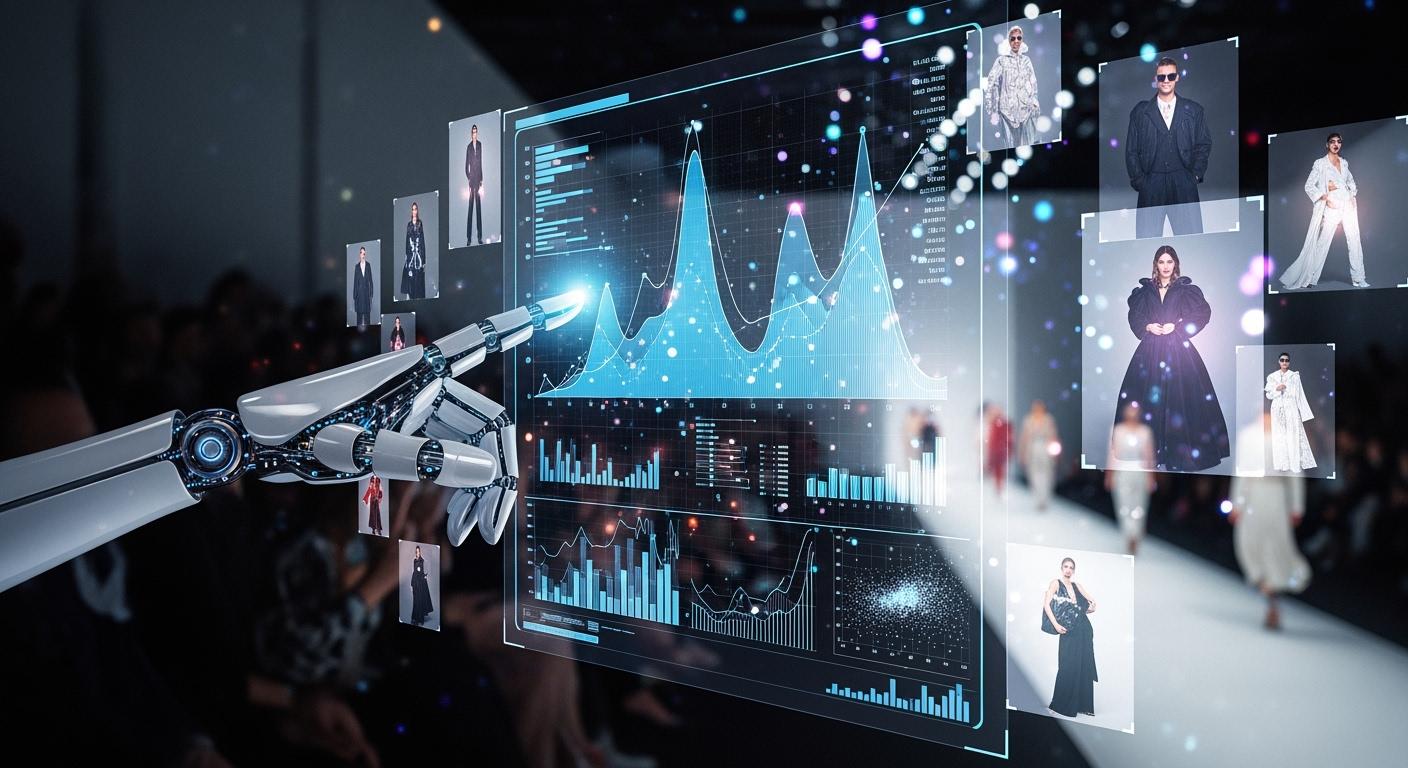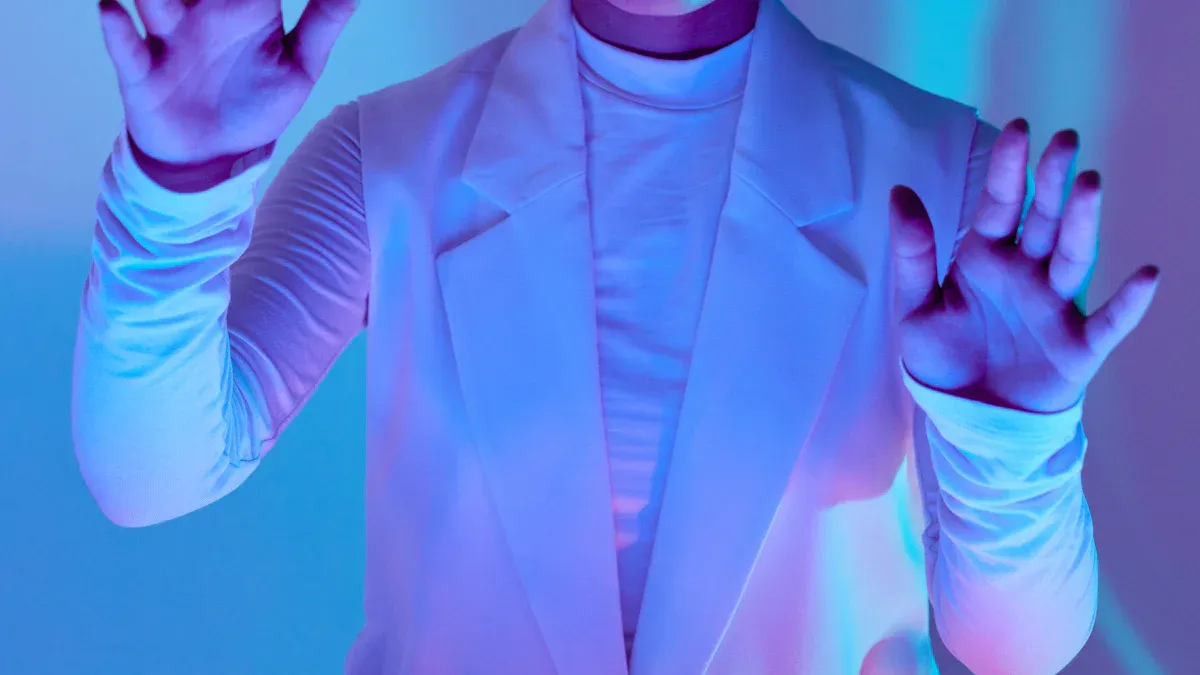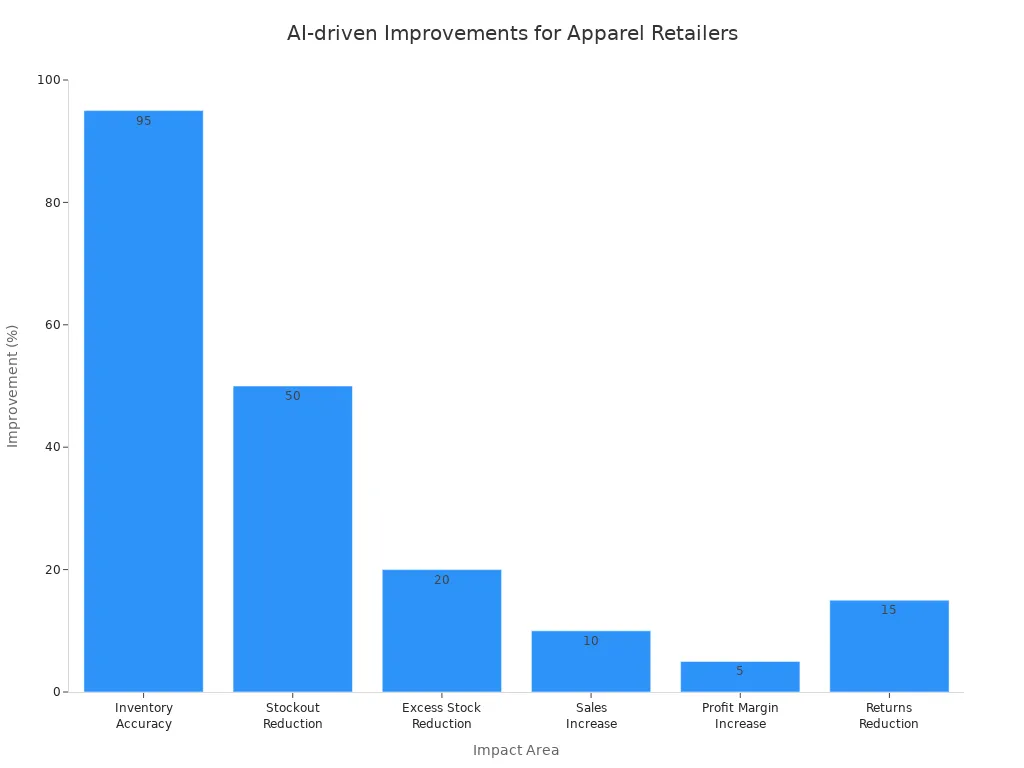
You see how AI uses machine learning to scan massive amounts of content. This content comes from top fashion influencer feeds on social media. The AI analyzes content by processing visual data like images and textual data from captions. It identifies recurring patterns in clothing and styles. This process powers trend forecasting for upcoming fashion trends. This matters because the global fashion influencer market is huge, projected to grow from USD 6.5 billion in 2024 to over USD 128.8 billion by 2034. This technology transforms raw social media content from each influencer into quantifiable data, making forecasting future trends a precise science for the fashion industry. This data helps predict the next big fashion trend.
How AI Analyzes Content from Influencer Feeds

You can see how AI analyzes content through a multi-step process. The system first identifies the right influencers and content. Then, it extracts visual and textual data. This strategy creates a complete picture of emerging fashion trends.
Identifying Key Influencers and Content
First, AI helps you find the most valuable influencer, which isn't always the one with the most followers. The AI goes deeper, analyzing data to measure an audience's authenticity and the quality of its engagement. This ensures your marketing strategy connects with a real, active audience. AI tools use specific performance metrics to find the best influencer for your brand.
| AI Tool | AI-Driven Performance Metric |
|---|---|
| AspireIQ | Engagement rate predictions and content analysis |
| Hypr | Audience overlap analysis |
| Upfluence | Content resonance scoring |
AI also protects your marketing investment by spotting fake engagement. It flags suspicious activity to ensure the influencer-generated content reaches a genuine audience.
- Sudden Follower Spikes: These often indicate an influencer purchased followers.
- Low Engagement Ratios: A huge audience with very few likes suggests a fake audience.
- Generic Comments: Repetitive comments signal bot activity, not a real audience.
Visual Data Extraction via Computer Vision
After finding the right influencer, the AI analyzes content from their social media feeds. It uses computer vision to process influencer-generated content. This technology acts like a digital eye, scanning every image and video.
How It Works: Computer vision identifies specific items in the content, like 'wide-leg jeans' or a 'leather trench coat.' It also detects smaller details, such as a 'satin finish,' specific color codes, and patterns. This process turns visual content into structured data for analysis.
This data helps you understand exactly what a high-performing influencer content post contains. The AI catalogs every piece of fashion data from the influencer's content.
Textual Data Analysis with NLP
The AI also reads the text that comes with the visuals. It uses Natural Language Processing (NLP) to analyze captions, comments, and hashtags from social media. This helps you understand the audience's feelings about a fashion trend. NLP gauges sentiment by categorizing comments as positive, negative, or neutral. This data reveals how an audience truly feels about a new style. This process is key for trend optimization. The AI identifies recurring keywords and hashtags, like #balletcore or #mobwife, to spot emerging fashion trends before they go mainstream. This analysis of social media content provides clear data on what the next big fashion trend will be.
Predicting 2025 Trends with AI Analytics

After the AI analyzes content, it moves to the next powerful step: forecasting. You can use this analyzed data to predict which styles will define 2025. The system identifies patterns, builds predictive models, and measures how quickly a new fashion look is adopted. This process turns raw data into a clear roadmap for future fashion trends.
Real-Time Pattern Recognition
You can see emerging trends the moment they appear. AI provides real-time pattern recognition by constantly scanning social media. For example, the fashion tech company Heuritech uses advanced AI to analyze over 3 million images and videos every day. This real-time analysis helps you spot more than 2,000 fashion attributes, like prints and fabrics, from influencer content. This gives you a live view of what people are starting to wear. Big brands like ZARA use similar real-time data from sales and customer feedback to decide which styles to produce, reducing waste and meeting demand.
A key part of trend spotting is telling a short-term fad from a long-term trend. AI helps you do this by looking at several factors in real-time:
- Temporal Analysis: The AI checks how long an influencer and their audience show interest in a style.
- Sentiment Correlation: It measures if the feelings about a trend are positive across different groups.
- Adoption Velocity: The system tracks how fast a new look spreads from one influencer to another.
- Underlying Drivers: AI analyzes the "why" behind a trend, connecting it to cultural moments or consumer needs.
This real-time trend spotting ensures you focus on fashion movements with real staying power. The AI processes text, image, and video content simultaneously, giving you a complete picture of what's happening in fashion right now. This real-time optimization helps you make smarter decisions.
Predictive AI Forecasting Models
You can look into the future of fashion with predictive AI forecasting models. These complex systems use the data collected to make accurate predictions about upcoming trends. The forecasting process relies on a wide range of data inputs to ensure its predictions are reliable.
Note: Effective forecasting requires diverse data. AI models use everything from historical sales figures and runway images to social media posts and customer reviews. This mix of data gives the AI a deep understanding of the entire fashion ecosystem.
The accuracy of this forecasting is impressive. Some AI-powered systems from trend analytics firms report accuracy rates over 90%. In specific areas like knitwear, AI forecasting models have improved prediction accuracy from 60% to 80%. However, not all models are perfect. A study using ChatGPT to predict men's fashion trends found it identified only nine of 39 professionally forecasted trends, showing that specialized AI tools are often necessary.
Several companies lead the way in AI trend forecasting. Firms like WGSN and Stylumia offer platforms that give you access to powerful forecasting tools. Stylumia, for instance, provides solutions that filter out data noise to find true consumer demand. Its tools can even generate new design ideas based on winning attributes from millions of images and influencer posts. This makes forecasting less about guessing and more about data-driven strategy.
Quantifying Trend Adoption Rates
You need to know if an influencer's content actually drives sales. AI quantifies trend adoption rates by connecting influencer activity directly to consumer behavior. This data shows you exactly how much impact an influencer has on the fashion market. Research shows that 72% of Gen Z and millennial consumers make purchases based on an influencer's recommendation.
The speed of this adoption, or trend velocity, is staggering.
- When an influencer posts a trending outfit, product searches can increase by 500% in just 24 hours.
- Items often sell out within 48-72 hours of an influencer feature.
- Products promoted by an influencer achieve a 27% higher conversion rate than those in traditional ads.
AI also helps you understand the two main roles an influencer plays in the fashion world. Sometimes, an influencer reinforces trends that are already popular, like tweed jackets. In other cases, an influencer leads the way by introducing new items, like varsity jackets, to a mass audience. AI tracks this data in real-time, showing you whether an influencer is starting a new trend or amplifying an existing one. This insight is critical for your trend forecasting and marketing efforts, as it confirms that influencer content directly shapes what consumers buy.
Shaping Future Fashion with AI Insights
You can transform raw data into clear instructions for your brand. AI analyzes the content and generates actionable trend reports. These reports give you a competitive edge in the fast-paced fashion world. This data helps you understand what customers want and how to deliver it.
Generating Actionable Trend Reports
You can use AI to create detailed reports that guide your marketing strategy. These reports turn complex social media data into simple, powerful insights. This process helps you make smarter decisions about your fashion brand.
- Shopper Behavior Analysis: AI reveals what shoppers click on, search for, and purchase, helping you optimize product promotions.
- Sentiment Analysis: The system analyzes customer reviews and social media posts to gauge feelings about a brand or trend.
- Competitor Benchmarking: You get reports on competitor performance, pricing, and marketing to adapt your own strategy.
- Emerging Trend Identification: AI spots new trends like 'LumberJane' from social media content, allowing you to tag products quickly.
Informing Product Design and Inventory
You can use these insights to shape your product lineup and manage stock. This data directly informs design choices and prevents waste. This optimization makes your fashion business more efficient and profitable. Many top apparel brands already use AI to guide their design process.
| Brand | AI Application | Impact on Product Design |
|---|---|---|
| Adidas | 3D printing with generative AI | Creates unique shoe designs customized to individual foot shapes |
| H&M | Generative AI | Tests designs without the cost of physical prototypes |
| Zegna | AI-powered configurators | Allows customers to personalize their own apparel products |
AI also helps you solve the problem of overproduction. It forecasts demand with high accuracy, so you only make what you can sell. For example, Zara uses AI to analyze customer data in real-time. This allows the apparel brand to sell 85% of its items at full price.
AI-driven inventory decisions can increase inventory accuracy to 95%, reduce stockouts by 50%, and boost sales by 10%. This data shows the clear financial benefit of using AI for apparel management.

Defining New Influencer Marketing Trends
You can build better marketing strategies with AI. The technology is defining new influencer marketing trends by making campaigns more precise and effective. This moves your marketing from guesswork to a data-driven, ai-powered strategy.
AI helps you find the right influencer for your fashion brand. It looks beyond follower counts to find an influencer with an authentic, engaged audience. This leads to more impactful campaigns.
AI is creating several new influencer marketing trends. It helps you find the perfect micro-influencer, whose followers have high conversion potential. This is one of the most important influencer marketing trends for driving sales. AI also helps you create impactful campaigns by personalizing content for each influencer. This focus on data is one of the key influencer marketing trends shaping the future of fashion marketing. You can use these influencer marketing trends to improve your marketing ROI. These new influencer marketing trends make every marketing dollar work harder. The right influencer and content create impactful campaigns. This is how influencer marketing trends are changing the apparel industry. The best influencer marketing trends are powered by data.
You see how AI analyzes content from a top fashion influencer. This data-driven trend forecasting empowers the fashion industry. It moves fashion away from subjective guesswork toward precise, quantitative predictions. AI forecasting uses influencer content to understand fashion trends. This influencer-led fashion trend forecasting shapes the fashion, clothing, and styles that will define the fashion of 2025. This is all thanks to influencer fashion content and influencer fashion forecasting from a key fashion influencer. The future of fashion is shaped by this influencer trend.
FAQ
How does AI improve influencer marketing?
You can use AI to find the best influencers for your brand. This data-driven marketing approach ensures your message reaches an engaged audience. This strategy is a key part of modern marketing.
Can small brands use this AI for marketing?
Yes, many AI tools offer scalable solutions for your business. This accessibility makes advanced marketing available to smaller brands. Your marketing can compete effectively with larger companies using this technology.
What is the main goal of AI in fashion marketing?
You see the main goal is making marketing more precise. AI turns trend data into a clear plan for your brand. This data helps you create a successful marketing campaign.
Does AI replace human creativity in marketing?
No, AI supports human creativity instead of replacing it. The technology gives you data to inform your marketing decisions. This information enhances your overall marketing efforts and campaign results.
See Also
Artificial Intelligence Manages Rapidly Spreading Trends in the Fast Fashion Industry
Innovative AI Solutions Revolutionize Fashion for a More Sustainable Global Future
Machine Learning Accurately Forecasts Fashion Trends, Significantly Increasing Retail Sales
Utilizing Predictive Analytics to Harmonize Fashion Supply with Consumer Demand
Achieve Precise Fashion Trend Predictions by Analyzing Comprehensive Sales Data